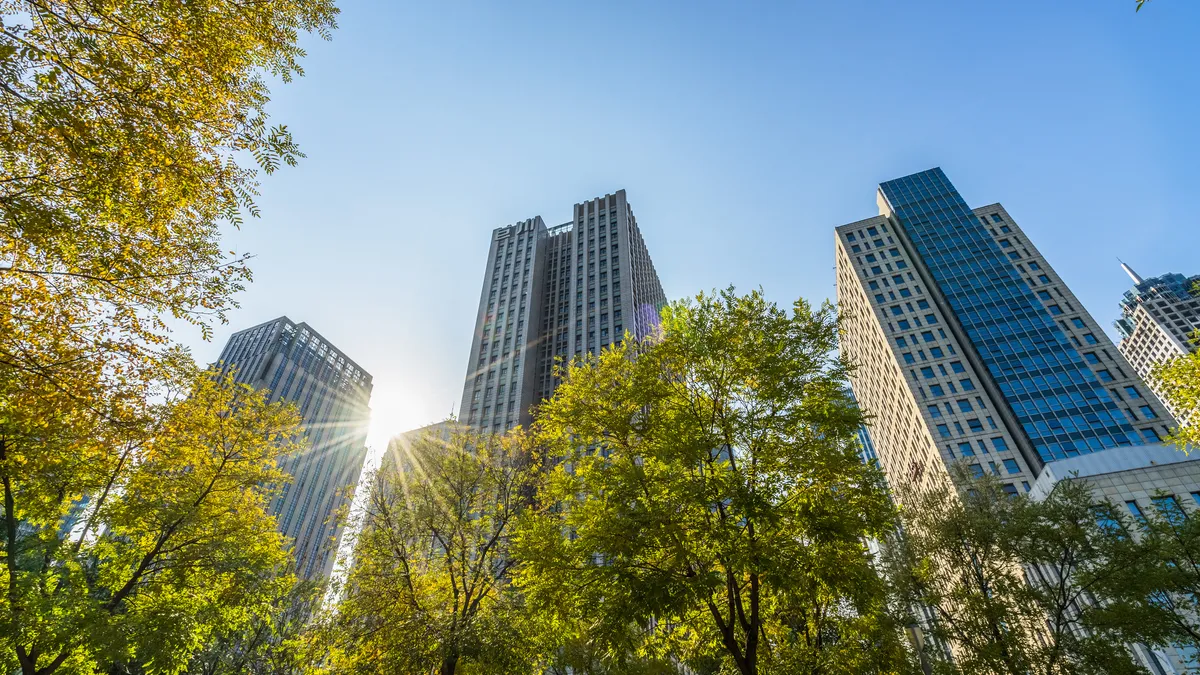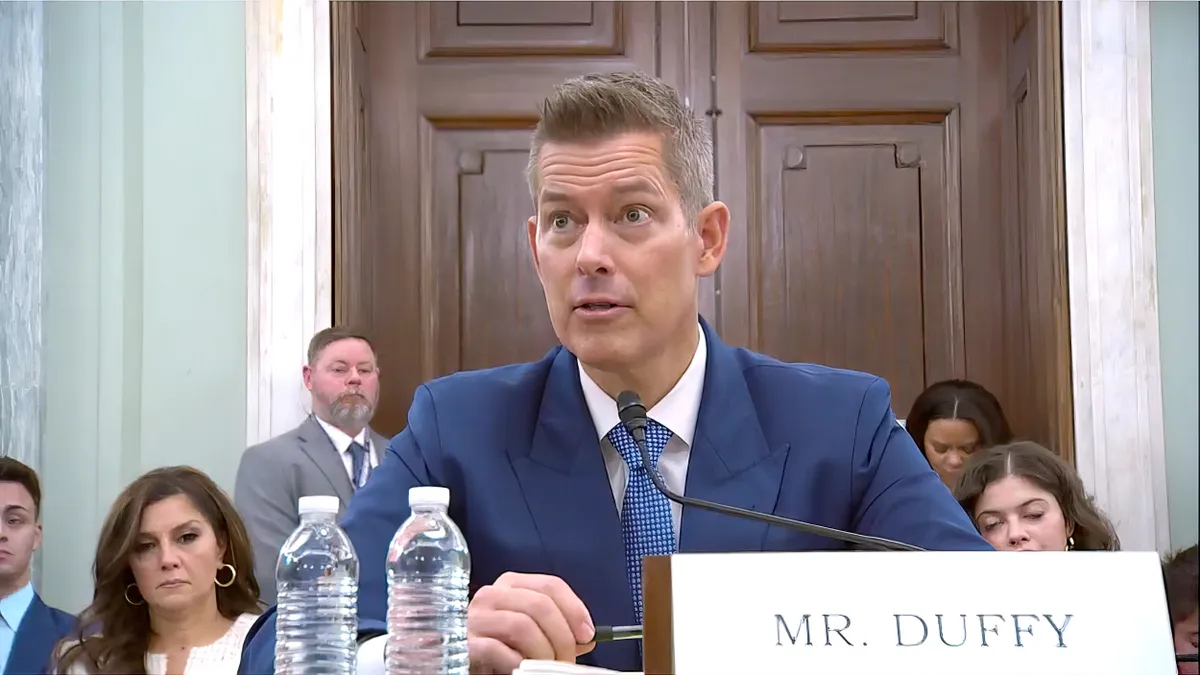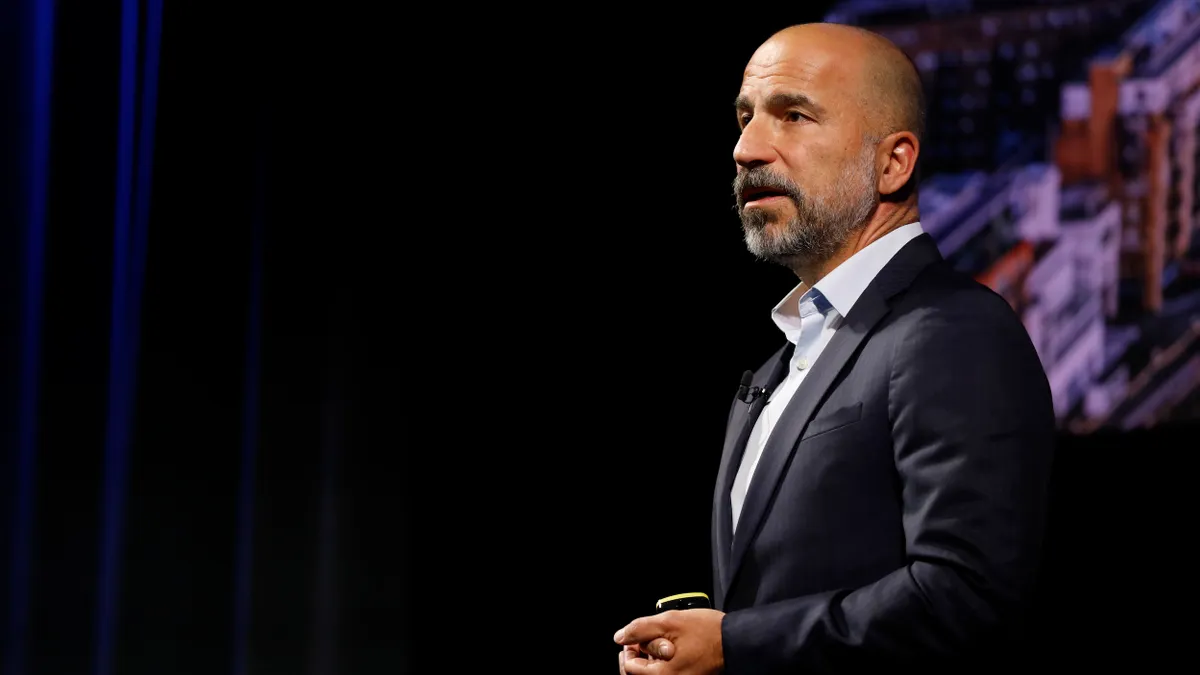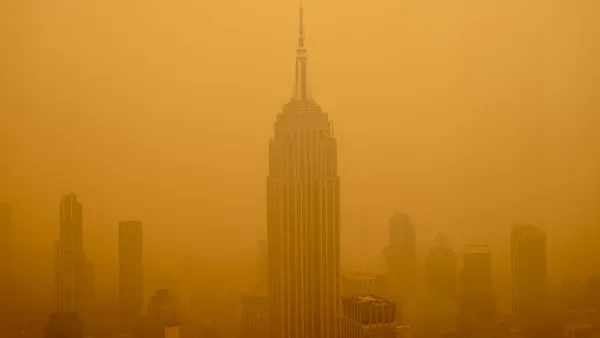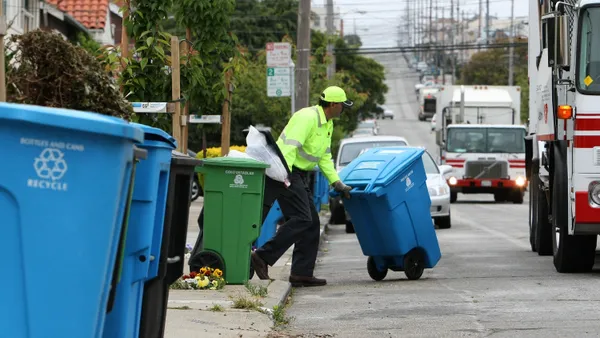Dive Brief:
-
The Smart Surfaces Coalition launched a policy resource to help policymakers and community advocates shape plans for using trees to mitigate extreme heat and manage storm water.
-
The 16-page document, released April 24, includes policy options, ordinance language, resources and case studies of successful strategies that local officials can use to strengthen tree canopies in their communities.
-
Urban tree canopies may help mitigate urban heat island effects, according to researchers at the National League of Cities and the Smart Surfaces Coalition. These areas, which can experience daytime temperatures in cities up to 7 degrees hotter than outlying areas, can lead to heat-related illnesses and deaths.
Dive Insight:
Extreme heat in cities with fewer trees correlates with higher energy consumption and air pollution levels, as well as greater rates of illness and death from heat waves, according to a study published last year in Nature. By providing shade and emitting water vapor that cools the air, trees can reduce heat-related illnesses and the negative health consequences of poor air quality, the EPA reports. In Dallas, planting and protecting trees and installing cool roofs and paving materials reduced heat deaths by 22%. Urban tree canopies can also sequester carbon, reduce storm water runoff, reduce energy consumption, provide habitat for birds and small mammals, and improve pedestrian safety.
The resource provides guidance to help cities maximize trees’ role in enhancing resilience and health, use zoning to enhance tree preservation and expansion, and finance long-term maintenance.
The policy resource explores Columbus, Ohio’s Urban Forestry Master Plan, which prioritizes neighborhoods with high need and low coverage; Salem, Virginia’s use of Urban Forest Overlay Districts to increase trees in new development; and Oakland, California’s Urban Forest Plan exploring blended funding for tree maintenance. In California, every dollar spent on tree maintenance generated $5.82 in benefits in the form of energy savings, carbon dioxide removal, air pollution uptake and release, rainfall interception, and property values, a USDA Forest Service study found.
In December 2024, the Smart Surfaces Coalition released an online policy tracker that provides city leaders with over 450 policymaking resources to mitigate urban climate change impacts using smart surfaces such as green infrastructure, solar panels and “cool” roofs.


